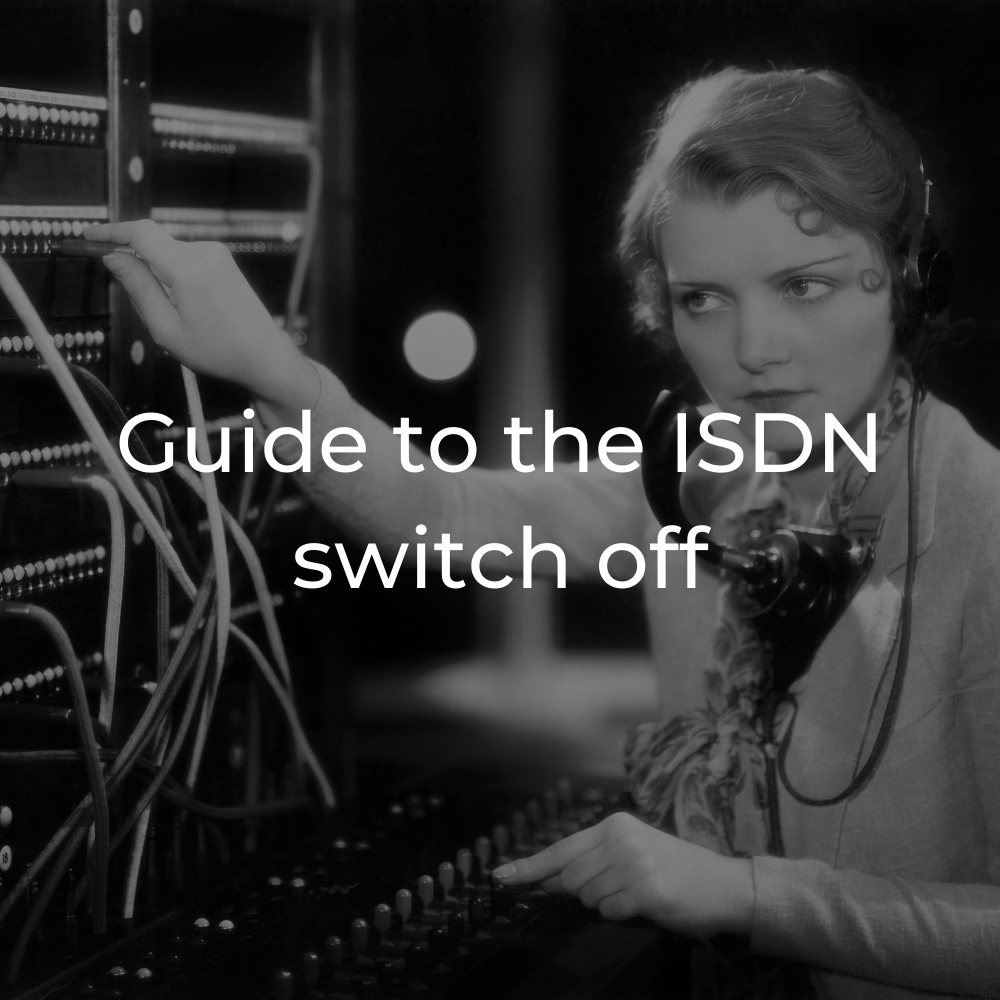SD-WAN vs MPLS: why make the switch?
Star Wars droid or the future of networking? Learn about SD-WAN and how it compares to standard business WANs like MPLS. (Hint: we think it's better.)

SD-WAN… it sounds like something out of Star Wars, doesn't it? Like some ungodly mash-up of Obi-Wan Kenobi and a service droid?
But it's not science fiction. SD-WAN represents the cutting-edge of business networking, providing a solid foundation for a cloud-orientated future – no droids necessary.
Let's be honest. If you've found this blog post while researching
SD-WAN, you probably at least know the basics. That's cool – just skip ahead to learn how it can benefit your business's security and productivity.
Need a quick SD-WAN 101? Just keep reading.
Time to get our teaching caps on…
SD-WAN explained
SD-WAN stands for "Software-Defined Wide Area Network".
Let's unpick that, starting with the "WAN". A wide-area network is any networking solution that works across a wide area. The internet can be considered a very large WAN – the biggest of all WANs, in fact – but the term is typically used to mean a business network that connects branches in separate towns, cities or even countries.
The "software-defined" part is where things get really clever. Unlike traditional WANs like MPLS, which are hardware orientated, SD-WAN relies on an extra software abstraction layer. This unlocks all sorts of useful features and, most importantly, ensures that cloud services can become a central facet of your network infrastructure.
Not sure what MPLS is? Take a moment to
skim through our Jargon Buster. There are lots of abbreviations in networking lingo…
Why should I upgrade?
The short answer: because old-school WANs aren't built for our current, cloud-connected world.
If you manage a network, you'll know the struggle. Higher-ups have heard good things about the cloud, and want everything migrated sooner than you can say "cumulonimbus".
You, however, realise that it's not as simple as all that. You're going to need to come up with some creative hacks, fast, and nobody's going to understand your excuses because they couldn't care less about bandwidth or bitrates.
So let's take a back-to-front approach. Let's look at the
problems you're likely to face integrating the cloud into a traditional WAN, and see how SD-WAN can help solve them – or, better still, avoid them altogether.
There's just not enough bandwidth to go around…
With MPLS, your headquarters may as well be the centre of the universe. All network traffic is routed through HQ, which handles security and connections on site.
That's fine if you're in 2011. But when hundreds of users are trying to access cloud services at the same time, demand for bandwidth skyrockets. This centralised approach might have worked in the past, but it's woefully inadequate for our needs nowadays.
This is where SD-WAN's software-orientated approach can help. It can harness several technologies at the same time, such as broadband, ethernet and LTE. And it uses intelligent routing to ensure traffic is directed via the quickest path possible, based on definable rules like time of day and application priority.
For you, this means less pressure on HQ to manage the mountains of bandwidth users need. And because everything is end-to-end encrypted in software, you don't have to sacrifice security to make it happen.
Everyone's working from home nowadays…
In case you're reading this in the far-flung future, allow us to explain. We're currently in the midst of a global pandemic, which has led to countless employees working from home. It turns out, too, that many of us rather like it.
This poses a significant challenge for network administrators though. How can you ensure users can stay connected using their own technology, while still keeping things secure and above board?
One option would be to install a network connection in every employee's home. With a traditional network, this would be out of the question. But with SD-WAN, you can.
Again, it's all down to that superhero software layer. Because the software directs traffic, handles security, and all sorts of clever stuff like that, you don't
need a hard-wired connection. All home users need is a single, easy-to-install WAN router.
This is a BIG subject that we could write a whole blog post about.
Oh, look. We did.
It's all just too expensive…
Rolling out network infrastructure is costly and time-consuming, right?
Wrong. Installing hardware is costly. Using software to do the same job can cut costs considerably. And – good news – it can typically be rolled out much more quickly too.
This might not mean much to you now, especially if you already have WAN architecture in place. But SD-WAN isn't just for the "now". Making the switch means future-proofing your business network too.
Say you want to set up a new branch in a remote location, or you need a temporary workspace while maintenance work is carried out. With a traditional WAN, you'd need to jump through several expensive hoops to make it happen. But with SD-WAN, it's quick and simple to get the new office up and running.
Flexible? Not half.
How does the migration process work?
So, installing a software-defined network solution is easier than setting up its hardware-based counterpart. That much is clear.
In fact, some pieces of SD-WAN hardware – like routers – literally set themselves up. It's just a matter of switching them on, making a cup of tea, and waiting.
But while SD-WAN is less hassle than hardware WANs, it still requires a fair bit of prep.
For instance, you have to consider
if and
how it will integrate with your current WAN architecture. And you'll need to set up the software to suit the needs of your business and its staff.
This is where we'll blow our own trumpets, just a little bit.
See, at Yoozoom, we're not the "sell-and-run" types. Far from it. With our fully managed service, we'll be with you through every step of the process.
It starts with a free consultation, where we'll chat about your current network infrastructure and give you our honest assessment of whether SD-WAN is right for you.
Next, we'll visit you on-site to get you up and running. And, for the duration of your contract, you'll have access to our expert engineers 24 hours a day, 365 days a year. If you have any issues, just drop them an email or give them a call and they'll stop at nothing to get them sorted.
Interested?
Book your free, no-obligation consultation today.
Want to know more? Take a look at our dedicated
SD-WAN page, which covers all the juicy details of this future-focused networking solution.
And while you're here, why not
sign up to our Knowledge Hub? We'll send you useful tech tips and news, direct to your inbox. (Don't worry – it's a spam-free zone.)

Get instant access to our knowledge hub.
Sign up* to access our exclusive cloud transformation guides. You'll learn:
- How to transition to The Cloud
- How to increase productivity with technology
- How to increase sales from your website
- Industry news to give you an edge
- And so much more!
*We may contact you to let you know about what’s going on at Yoozoom. This can be anything from the latest product innovations to exclusive deals and future events. Remember, you can always opt out later.
We will get back to you as soon as possible.
Please try again later.
Contact Us
Yoozoom
Unit 8
Gemini Business Park
Sheepscar Way
Leeds
LS7 3JB
Contact Us
Yoozoom
Unit 8
Gemini Business Park
Sheepscar Way
Leeds
LS7 3JB
Company Number: 07618108
VAT Number: GB11304662
Yoozoom Technologies Limited T/A Yoozoom



















